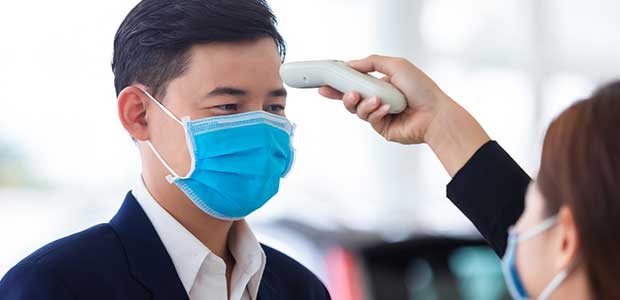
To Test or Not the Test? That is the Employer Question
With little federal guidance on how to reopen and operate workplaces during and post-pandemic, employers are questioning their responsibility to test or not test employees for coronavirus.
Workplaces will have to accommodate safety measures like social distancing and PPE—but should employers be testing workers for coronavirus, or taking temperatures?
That is the million-dollar question. Actually, the billion dollar question: Amazon said it plans to spend as much as $1 billion this year to regularly test its work force, while laying the groundwork to build its own lab near the Cincinnati airport, according to one NYT article.
Las Vegas casinos are testing thousands of employees as the city begins to reopen, and they are using primarily nasal sampling testing methods.
Even major league baseball teams are discussing regimens to test players and critical staff members multiple times a week.
By and large, employers want to test because they want to keep workplaces safe, yes. But mostly, it’s because the virus contracted or spread at the workplace could mean big legal trouble down the line.
The main issue with the question of employers’ responsibility to test is the dilemma of testing availability in the country. Public health experts and government officials have said that widespread testing will be critical to reopening US businesses, but there is little federal or clear guidance on the role employers should play in detecting and tracking coronavirus. As a result, businesses are largely responsible for sorting out whether or not to test—and how to do so.
“It is a really hard conversation because people want absolutes: ‘If I do this, will it guarantee I’ll have a safe workplace?’ None of the testing is going to provide that right now,” said John Constantine, the chief executive of ARCPoint Franchise Group, a nationwide lab network offering virus testing to employers. He added that if done smartly, testing could reduce health risks. “Even if it’s not perfect, some testing is better than no testing.”
There are two approaches to the idea of testing, too, the CDC explains. Diagnostic tests, for example, only detect infections during a certain period. Blood tests administered after infection only show if a person has coronavirus antibodies, but scientists are unsure about what COVID-19 immunity even looks like.
Other officials are saying widespread testing may be both unnecessary and cause for a false sense of security. Especially because a person can test positive for the virus one week and contract it the next.
However, despite lack of federal guidance on testing, the CDC released checklists to help schools and businesses in various industries decide to reopen.
At the very least, many workplaces like pharmacies and food service workplaces have been taking employee temperatures at the start of each shift. If a person has a temperature over 100 degrees, they are sent home.
However, a lot will depend on the nature of each workplace, officials say. For example, factories and meatpacking plants with employees already close together will likely need to test workers more often than will corporate offices with less in-person interaction.
According to the COVID Tracking Project, testing has increased to about 400,000 people a day. Nearly 13 million tests have been completed, according to the CDC, accounting for less than four percent of the population. It is unclear how many of the tests are diagnostic and how many are for antibodies.
One nascent strategy circulating among public health experts is running “pooled” coronavirus tests, in which a workplace could combine multiple saliva or nasal swabs into one larger sample representing dozens of employees. The technique—used during WWII to test soldiers for syphilis—would allow companies to see whether there is coronavirus circulating among workers. A positive result would lead to further individual testing within a group.
The future of what America’s workplaces will look like continues to be a burning question. Testing is likely to be a big part of that conversation.